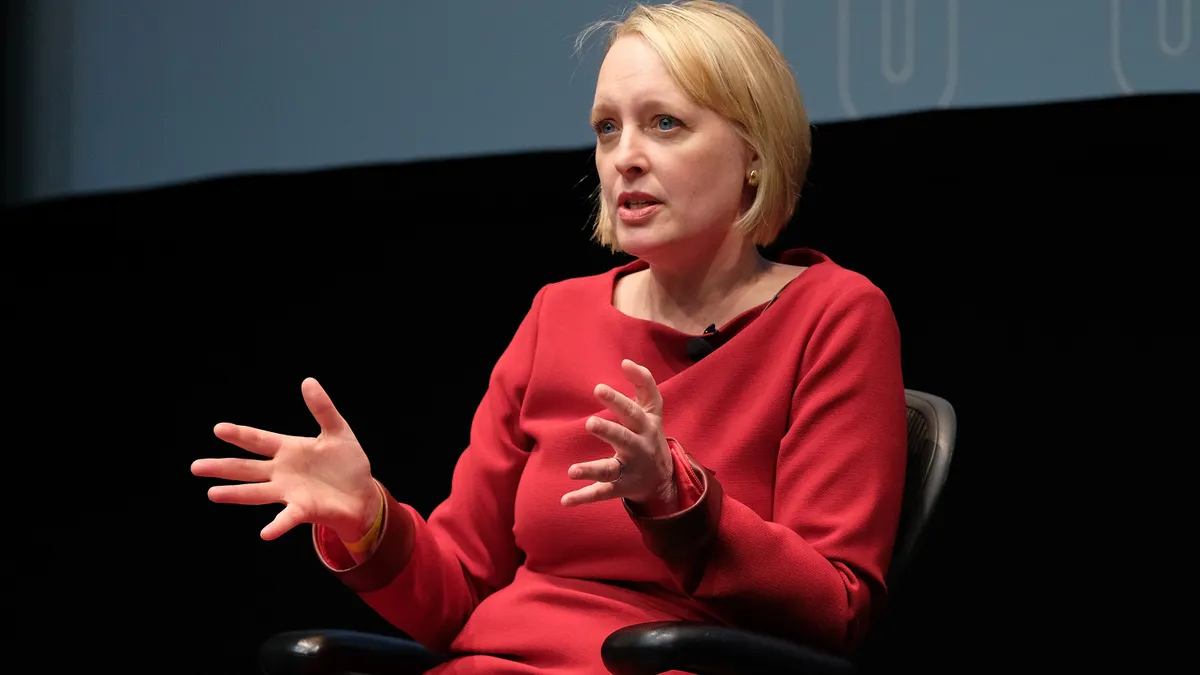Most HR leaders have heard disheartening statistics about the gender pay gap. PayScale, for example, reported in its Gender Pay Gap Report for 2020 that women make only $0.81 for every dollar men make. And the World Economic Forum has estimated that it will take more than 100 years to close the global gender pay gap.
But those figures don't always tell the whole story — especially when they're not paired with the proper context. To make sense of such information, HR leaders may need to brush up on their compensation vocabulary, understanding phrases like pay gap, pay equity gap and pay parity.
Understanding pay gaps and pay parity
PayScale's $0.81 statistic refers to an uncontrolled gender pay gap, which compares the median earnings of women to men. A pay gap generally points to the difference between the hourly wages of women and men. For example, a company with all-male senior leaders and all-female administrators may see significant differences in pay between genders. This difference represents an uncontrolled gender pay gap, Freeborn & Peters Partner Kathryn Lundy told HR Dive in an interview.
While uncontrolled gender pay gaps are informative, what may be more useful for companies to examine is controlled gender pay gaps, WorldatWork's Director of Executive Compensation Strategy Sue Holloway said. Operating under the concept of "equal pay for equal work," controlled pay gaps account for factors including job title, industry, job location, education and experience, she told HR Dive in an interview. When these factors are taken into account, pay inequity gaps may still exist, but they will likely be smaller than an uncontrolled analysis will produce.
According to the PayScale report, which comprised survey results from 1.8 million taken between 2017 and 2019, women in the controlled group make $0.98 for every dollar a man makes. This gap may appear small, but it has significant repercussions. PayScale indicated that over a 40-year career, a two cent disparity costs women $80,000.
Pay parity is a term used to signify the lack of a pay gap, Holloway said. "A lot of organizations seek to have pay parity. Shareholders may demand it," she said. Organizations often will define what they mean with this term. Generally, the goal is to pay fairly for people performing the same job, she said. This includes allowing for some differentials, such as geography, performance and experience.
The long road to pay parity
The pay gap has been an issue for years and, as the World Economic Forum forecasted, it's likely to remain a global phenomenon for at least a century.
Closing the gap is a systemic issue, Lundy said. If a woman who has worked for 10 years, performing exceptionally, decides to have a family and goes on parental leave, she may return to work on a part-time schedule if her employer doesn't allow working from home or a flexible work schedule, Lundy said. "Women fall off, and when they do return, they're not on the same track as their comparators. They're not put on high-profile cases, not provided the opportunities," she said.
Employers that allowed employees to work from home during the pandemic might be more open to conversations about long-term remote work in the future, Lundy noted. "I think companies have a very clear understanding of individuals' commitment to work," she said.
State and local salary history bans may also help diminish the salary gap. These laws, enacted by at least 19 states and 21 local municipalities, usually prohibit employers from asking about applicants' salary history and, in some cases, prevent employers from using an applicant's pay history to establish an offer. These laws aim to end one reason women are thought to make less than men, uncontrolled or controlled: a salary offer set based on the applicant's previous salary is likely to be lower for a woman than for a man, thereby perpetuating the wage gap.
Beyond gender
Even though much of the pay parity focus is on the difference in compensation between men and women, pay gaps occur in other groups. PayScale found that Black, Hispanic and Native American men earned less than white men, controlled or uncontrolled. In high salaried positions, Black women are paid $0.67 for every dollar as white men in the same occupations, according to the National Women’s Law Center’s analysis of 2018 Census Bureau data. People with disabilities earn $0.66 for every dollar as those with no disabilities, "regardless of work schedules or occupation," found the U.S. Census Bureau.
Gender pay inequity is detrimental to more than just workers, some say. The Institute for Women's Policy Research found that working women's poverty rate would be cut in half if women were paid the same as men. The study said that change would decrease the number of children growing up in poverty and would add $512 billion to the U.S. economy.
Addressing a pay gap
If an employer discovers a pay gap, it is vital to determine the cause, said Lundy. Education, work experience, unconscious bias and overt discriminatory animus can all play a role. The first step is to conduct a pay audit that looks across roles, demographics and locations to determine whether any disparities require a correction.
Next, provide training to managers and supervisors, she said. They are responsible for performance compensation and must make sure they do it fairly, transparently and equally, she added.
Company leaders need to assess inequities in talent management across the spectrum, Holloway said, including recruiting, selection, hiring, performance assessment and promotion practices.
"Look at advancement within the organization," Lundy added. Are the high-profile assignments equally distributed? Are there meaningful opportunities to receive mentoring? Ensure one individual isn't always saddled with "office housework," such as planning events, she said.
HR leaders must look deeply to uncover pay issues, Holloway said. Workers and job seekers want companies to be transparent about how salaries are determined. "They want pay gaps reported. And if there is a gap, what are you doing to close it?"




















